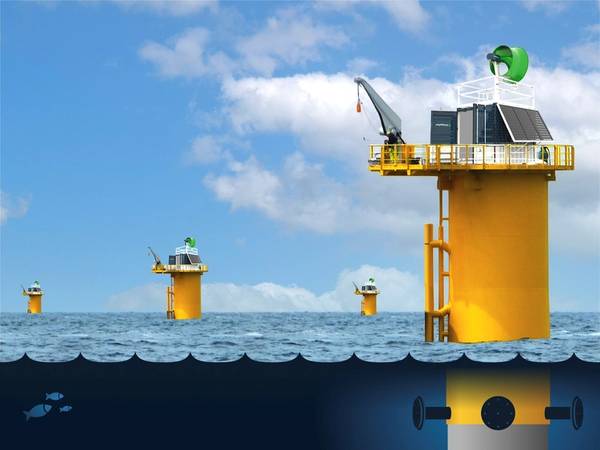
A new solution is designed to offer an environmentally friendly alternative to using diesel generators to supply energy during the construction phase of wind turbines, and sacrificial anodes to protect turbine foundations against corrosion.
The ICCP-POD combines two advanced technologies. The EnergyPod, developed by Amphibious Energy, is an easy-to-transport autonomous energy plant that uses sun, wind, batteries and intelligent electronics to provide sustainable energy during the 18-month construction of wind turbines, meaning diesel generators are no longer required.
To protect against corrosion during this construction phrase, CORROSION developed compact ICCP (Impressed Current Cathodic Protection) units. By using an electronic current supplied by the EnergyPod, these represent an eco-friendly alternative to sacrificial anodes, which discharge large quantities of metals and heavy metals into the water. When the wind turbines are installed and grid-connected, the energy supply for the ICCP system is switched from the EnergyPod to the wind turbine itself.
“CORROSION was the first company in the world to develop a cost-effective, easy-to-maintain and environmentally friendly anti-corrosion solution for wind turbines foundations,” said Niels Ros, Manager Offshore Wind at CORROSION. “We are delighted that through this partnership with Amphibious Energy, we are also able to offer the same sustainable protection solutions during the construction phase of wind turbines.”
“By partnering with CORROSION, we are able to bring two unique technologies together, which will drive down the costs for the offshore industry to protect their installations from corrosion in a 100% green way. This represents a big step forward in achieving net-zero operations for the offshore industry,” said Willem van der Merwe, Director at Amphibious Energy.
The ICCP-POD delivers substantial cost savings compared to a diesel generator, its developers said, adding that further savings can be realized in other ways. For instance, by installing uncoated foundations, foundations with a single base coat or utilizing less carbon steel (corrosion allowance), depending on customer needs and design boundaries.
Over a 25-year period, CORROSION’s systems discharge approximately 1.5 million times less aluminum into the sea that traditional sacrificial anodes. The EnergyPod is also completely recyclable and can be reused several times over a period of 5 to 10 years.



